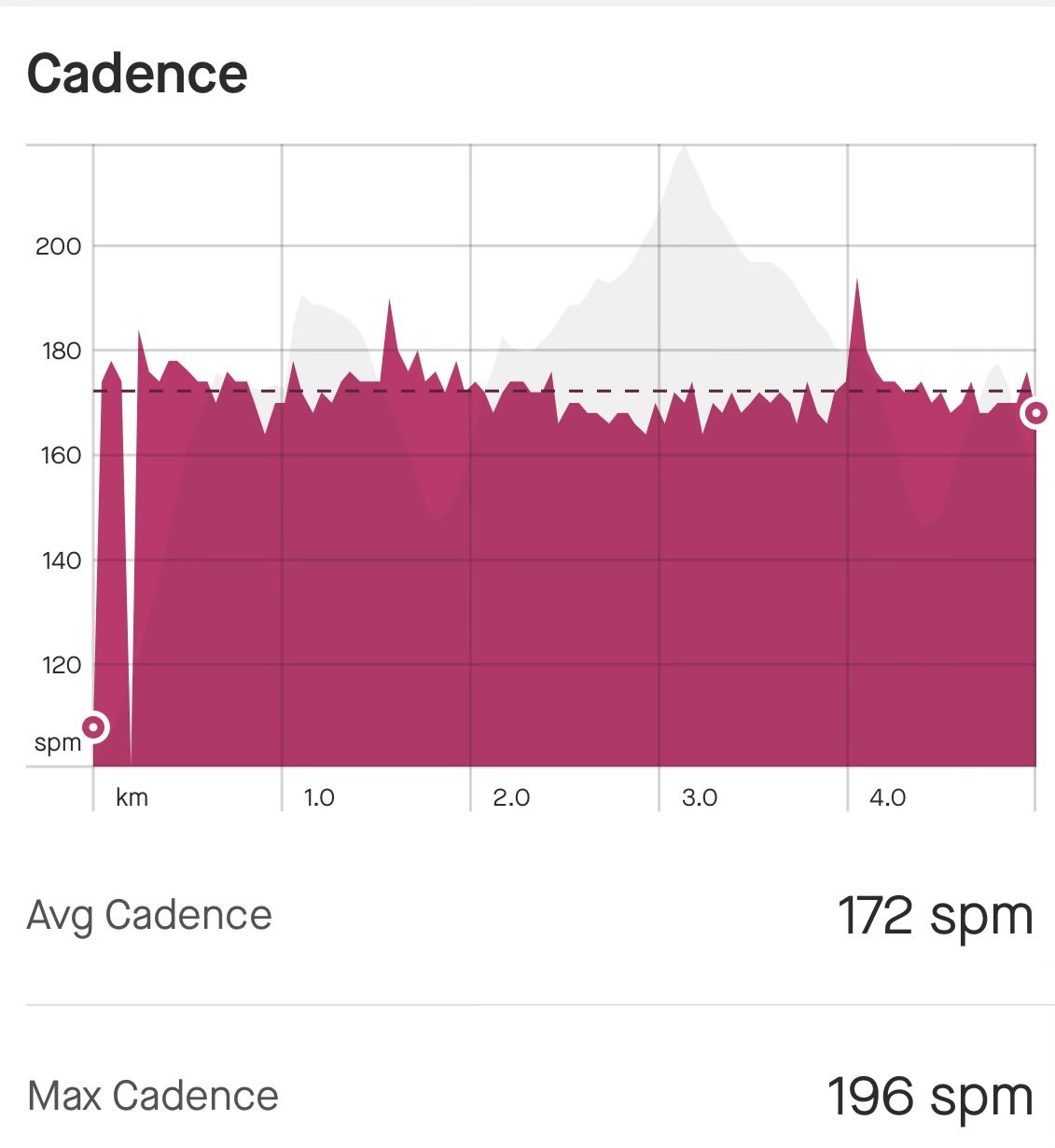Optimizing Running Performance and Preventing Injuries: The Crucial Role of Cadence in Running
What is Running Cadence?
Cadence in running, often referred to as stride rate or steps per minute, is a fundamental aspect of efficient and effective running. It represents the number of steps a runner takes in one minute and plays a crucial role in enhancing performance, preventing injuries, and optimizing overall running mechanics. And no, increasing your running cadence does not mean you need to increase your running speed - although the below tips might help with this part of running, too! :)
A Higher Cadence Helps Increase Running Efficiency and Economy
First and foremost, an appropriate cadence helps in optimizing running efficiency. A higher cadence, typically around 170-180 steps per minute, encourages shorter, quicker strides. This reduces overstriding, where the foot lands too far in front of the body, and helps to maintain a more compact, controlled stride. By shortening the stride and increasing turnover, runners can make more efficient use of their energy, leading to improved running economy and reduced fatigue during long-distance running.
Cadence and its Effect on Injury Prevention
In addition to improving efficiency, maintaining an optimal cadence can aid in injury prevention. Overstriding often leads to excessive stress on joints and muscles, increasing the risk of injuries such as shin splints, stress fractures, and knee problems. Conversely, a proper cadence encourages a midfoot or forefoot landing, which helps in absorbing shock more effectively and distributes the impact forces evenly, reducing the risk of injury and minimizing strain on the lower limbs.
Effect of Cadence on Adaptability
Cadence is particularly important in adapting to varying running speeds and terrains. This is especially important for trail runners and runners who do not run on a flat, paved surface. A flexible cadence allows runners to adjust their stride rate based on the terrain's demands and their desired pace. Whether running uphill, downhill, or on flat ground, maintaining an appropriate cadence ensures that the runner can efficiently adapt their stride length while keeping their overall mechanics and energy expenditure in check.
How do I Calculate my Running Cadence?
Calculating your running cadence involves determining the number of steps you take per minute while running. Here's a simple method to calculate your running cadence:
Counting Steps for One Foot: Find a flat, consistent surface to run on (e.g., a track, treadmill, or level road). Start running at a comfortable pace, ensuring your running form is as natural as possible. As you run, count the number of times your right foot strikes the ground in one minute. Make sure to count only the steps of one foot during this time.
Double the Count: Multiply the number of steps you counted for one foot by 2 to get your total cadence for both feet. This accounts for both your right and left foot striking the ground.
Example: If you counted 45 steps for your right foot in one minute, your total cadence would be 90 steps per minute.
Repeat for Accuracy: It's a good practice to repeat this process a few times to ensure accuracy. You can also calculate the average cadence from these repetitions for a more reliable result.
Alternatively, many running watches and fitness apps have built-in cadence trackers that provide real-time cadence data, making it even easier to monitor your cadence during a run.
Remember, optimal cadence typically falls in the range of 170-180 steps per minute, but individual preferences and body mechanics may vary. Adjusting your cadence to fall within this range can often lead to improved running efficiency and reduced risk of certain injuries.
Below is cadence data I took from Strava after my latest run.
I Have a Low Running Cadence. What Does This Mean?
A low cadence in running, typically ranging from 140 to 160 steps per minute, can pose significant challenges for both a runner's performance and injury prevention. Recreational runners showing a lower cadence often exhibit overstriding, where the foot lands too far in front of the body. This overstriding leads to an increase in braking forces upon foot strike, making it more difficult to maintain efficiency during the run. The excessive braking forces can also increase the heel striking angle and the vertical loading rate of the ground reaction force, which places undue stress on the joints and muscles. These mechanical inefficiencies can hamper running performance and elevate the risk of injuries, including shin splints, stress fractures, and knee problems. But fear not: cadence change can be easily implemented into your next run.
How Do I Increase My Cadence?
Retraining cadence is a feasible endeavour for most runners and offers numerous benefits. Modifying cadence can be achieved through conscious adjustments to stride length, encouraging shorter steps, and matching steps with a predetermined beat. Synchronizing steps with a rhythmic beat or music provides a practical way to increase cadence. Another effective approach is incorporating sessions of running barefoot or with minimalist shoes (Minimalist Index > 70%), which encourages a more natural and efficient foot strike, consequently maintaining a higher cadence. However, caution must be exercised during the transition to minimalist footwear, as a gradual transition time must be considered. Consult your Physiotherapist or seek a Physiotherapist who can guide you on this transition.
What Else Can I Do?
Reading this article and implementing these changes can be a great place to start. I highly recommend a running assessment. A personalized evaluation allows for tailored recommendations and interventions, enabling you to optimize their technique, prevent injuries, and enhance overall performance.
Written by Brigitta Hicks, Registered Physiotherapist



